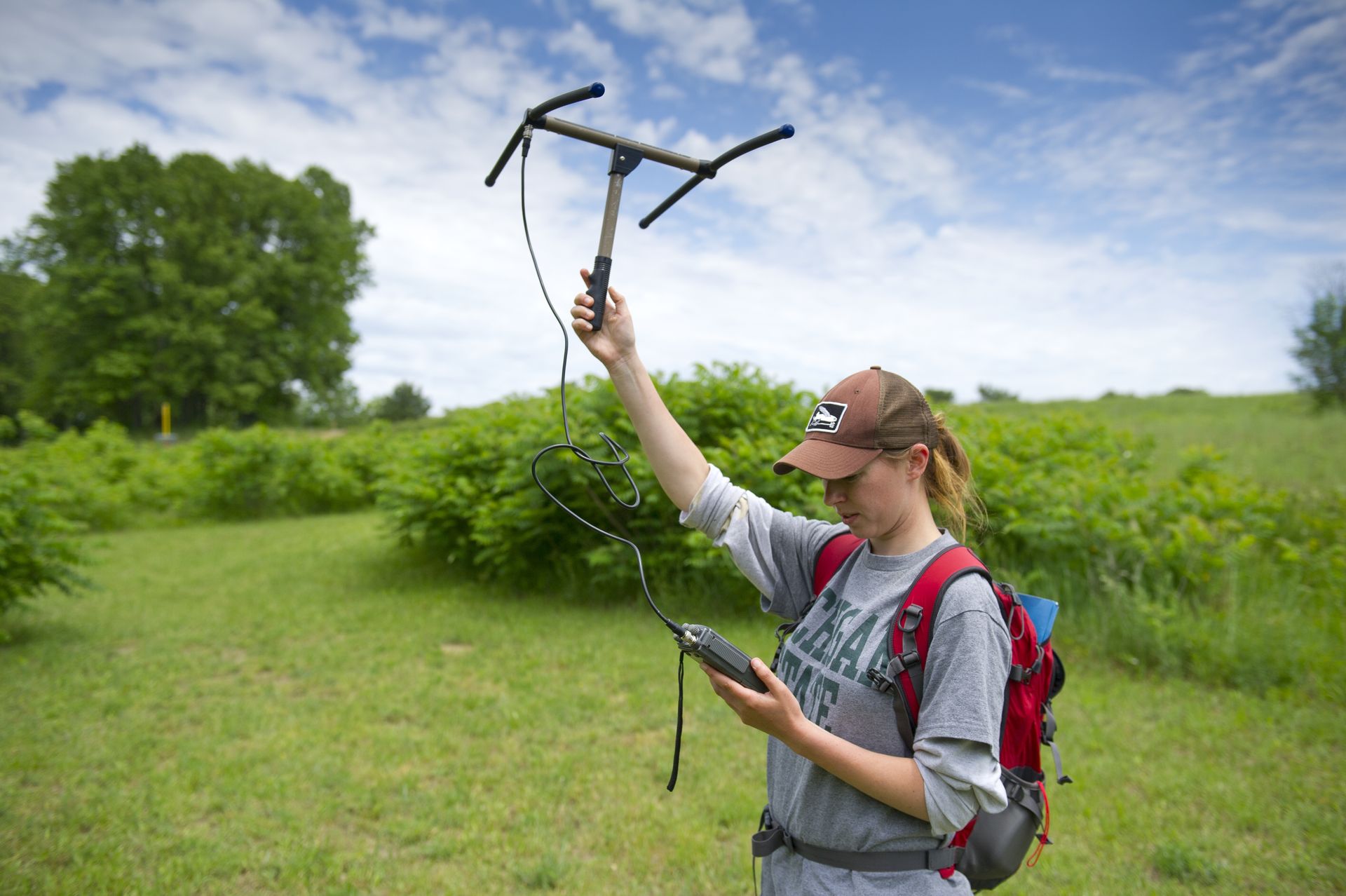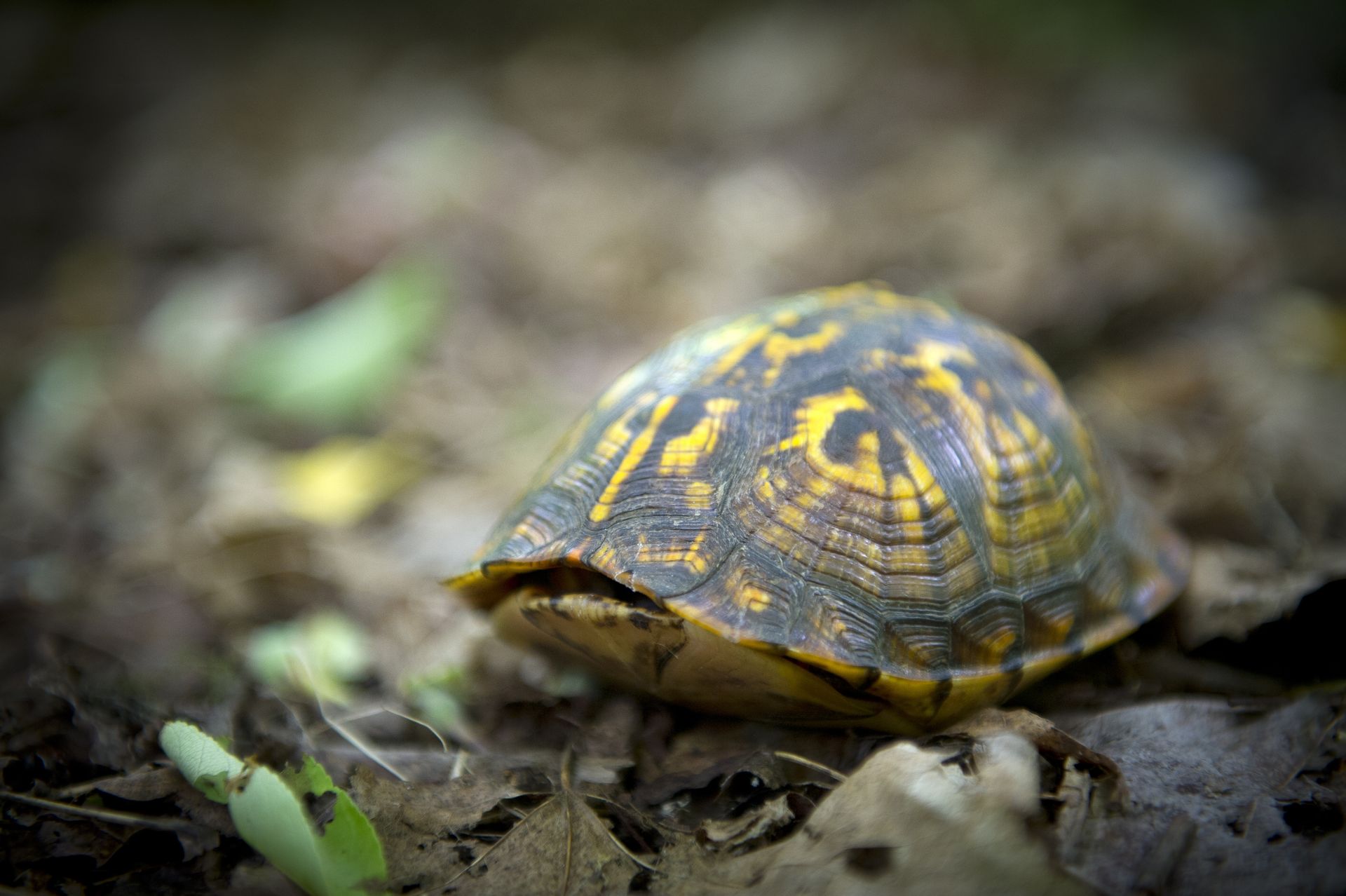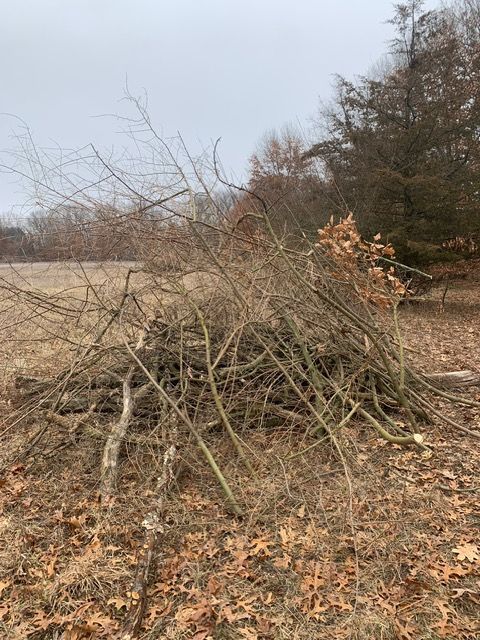Slow and Steady: the Eastern Box Turtle
When considering wildlife conservation, many people first consider large, charismatic megafauna. However, there are many more species needing conservation extending from the uplands of Michigan all the way below the surface of the Great Lakes. In honor of World Wildlife Conservation Day on December 4th, we wanted to highlight the conservation journey of the Eastern Box Turtle in Michigan.
History
Factors contributing to the listing status of the Eastern Box Turtle in Michigan are mostly due to fragmentation of habitat. Namely, large-scale conversion of landscapes into agricultural land and urban development contribute to habitat fragmentation or elimination. Not only does this conversion diminish the necessary elements for survival, but road mortalities also increase in these areas.
Unfortunately, Eastern Box Turtles have also historically fallen victim to being removed from native habitats and becoming domestic pets. These wild captures have likely contributed to the downfall and listing of the species in addition to the other factors. While there are domestic pet trades including these turtles, it is important to find a reputable source that does not remove wild individuals. In addition to the pet trade, many turtle species can fall victim to turtle racing where shells are painted for individual identification. This paint has several negative impacts including toxins being absorbed through the shell, prevention of sunlight penetration, and the potential to increase predation.
Conservation Efforts

In correlation with many other conservation efforts of listed species, habitat management often plays a key role in conservation success. Understanding the behaviors and habitat preferences of a species are critical steps to strategize conservation methods. Managing and creating the desired habitat for a species can be the best approach to indirectly conserving the species.
Typically, the Eastern Box Turtle inhabits forests with sandy soils and nearby water sources. Nesting typically occurs in moist, sandy, open areas for temperature regulation during the months of June and July. Due to their affinity for moisture, Michigan Natural Features Inventory (MNFI) Box Turtle surveys are typically done successfully after a rain when temperatures are above 60 degrees. MNFI encourages several management recommendations including buffer zones, minimizing herbicide and pesticide use surrounding wetlands, and controlling invasive species. Considering Box Turtle and other reptile habitat is important to prevent habitat fragmentation between overwintering and foraging areas to minimize risk of roadkill. As with many wildlife conservation initiatives, education of the public is critical for threatened and endangered species survival. Along with education, individuals should not be forcibly removed from their native habitats for selfish reasons like becoming a house pet. Similarly, domestic-bred individuals should not be placed back into nature as they likely do not have the necessary survival skills.
Characteristics
Turtle species, like other reptiles, rely on environmental conditions for body heat regulation. Box Turtles go dormant in the cold months to avoid cold temperatures and typically burrow deep into leaf litter, brush piles, and soil.

The Eastern Box Turtle gets its name due to its tall domed carapace (top shell) allowing optimal protection when the turtle is threatened and needs to tuck in resembling a box. Box Turtles have a unique shell in that the plastron (under shell) is hinged allowing them to potentially fully close their shell during an attack. Like many other turtles, the shell is the ultimate form of protection from predators but can also be used in species identification. This turtle species is primarily brown to black and has variable yellow or orange markings on the scutes (plates of the shell). The sex of an individual can be identified easily as males tend to have brighter shell coloration and red or pinkish eyes where females are duller with brown eyes. Females also have a flat or convex plastron where males are more concave. Additionally, females typically take longer to reach sexual maturity, but individuals have been recorded to live past 100 years old. This species also has a pointed beak used for their omnivorous diet throughout their lifetime.
Current Status
According to MNFI, the Eastern Box Turtle is considered a threatened species in Michigan. Once a species is listed, it is critical to begin conservation efforts to prevent rapid decline in the population and eventual extirpation. There is an apparent localization of this species primarily in the southwest portion of the lower peninsula with some historic locations having no more viable populations. While there are no tortoises found in Michigan, this is the state's only true terrestrial turtle. Generally, turtles contribute ecologically to the predator and prey cycle and can also be an environmental indicator species.
Get Involved

If you wish to help report turtle sightings in Michigan, visit MIHerpAtlas.org. While driving in highly fragmented areas, be alert for turtles crossing roadways. If you wish to move the turtle out of danger, move the turtle in the direction it is already heading. Additionally, purchasing a fishing license via the Department of Natural Resources (DNR) can also go toward conserving turtle species in Michigan.
If you would like to assist with the habitat conservation of species like this, consider joining Michigan United Conservation Clubs at a brush pile building On the Ground event in the upcoming field season.



